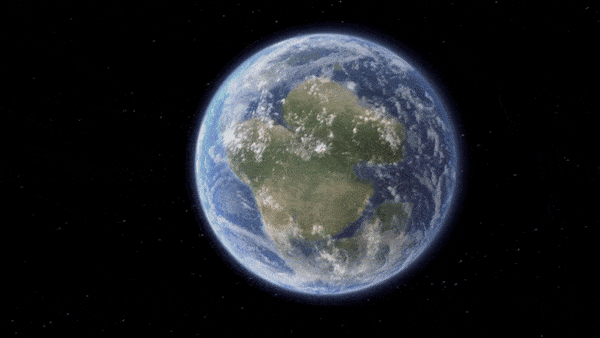When you buy through links on our site , we may earn an affiliate military commission . Here ’s how it works .
The detachment of supercontinents may activate explosive eruptions that send fountains of diamonds take up to Earth ’s airfoil .
diamond form deeply in Earth ’s crust , approximately 93 mil ( 150 kilometers ) down . They are land up to the airfoil very quickly in clap called kimberlite . These kimberlites go at between 11 and 83 mph ( 18 to 133 km / h ) , and some eruptions may have created Mount Vesuvius - like explosions of gases and rubble , saidThomas Gernon , a professor of Earth and climate skill at the University of Southampton in England .

A rough diamond in a mine
Researchers noticed that kimberlites go on most often during times when the architectonic plate are rearranging themselves in big way , Gernon said , such as during the breakup of thesupercontinent Pangaea . Oddly , though , kimberlites often erupt in the middle of Continent , not at the edges of breakups — and this interior crust is thick , tough and hard to disrupt .
" The baseball diamond have been sat at the base of the continents for hundred of millions or even zillion of year , " Gernon allege . " There must be some stimulation that just drive them suddenly , because these eruptions themselves are really muscular , really explosive . "
Gernon and his colleagues begin by see for correlations between the ages of kimberlite and the arcdegree of home base atomization occur at those times . They find that over the last 500 million old age , there is a form where the plate start to pull aside , then 22 million to 30 million years later , kimberlite eruptions peak . ( This figure hold over the last 1 billion years as well but with more uncertainness given the difficulties of retrace geological bike that far back . )

For example , the investigator find oneself that kimberlite eruptions picked up in what is now Africa and South America start about 25 million years after the breakup of the southern supercontinent Gondwana , about 180 million years ago . Today ’s North America also watch a spike heel in kimberlite after Pangaea began to rift asunder around 250 million years ago . Interestingly , these kimberlite eruption seemed to start at the edges of the rifts and then marched steadily toward the essence of the land the great unwashed .
To figure out what was driving these patterns , the researchers used multiple information processing system model of the deep incrustation and upper mantle . They found that when architectonic plates pull apart , the base of the continental crust thins — just as the crust up top stretches out and forms vale . blistering rock hike , comes into contact with this now - disrupted boundary , sang-froid and cesspool again , create local area of circulation .
These unstable regions can trigger unstableness in neighboring region , gradually migrating thousand of miles toward the center of the continent . This finding pit the real - life-time pattern seen with kimberlite eruptions starting near severance zones and then impress to continental interiors , the researchers reported July 26 in the journalNature .

But how do these instabilities cause volatile eruptions from deep in the gall ? It ’s all in the intermixture of just the correct stuff , Gernon enounce . The instabilities are enough to allow rock from the upper mantle and lower gall to fall against each other .
— Rare rhomb propose weewee loaf much profoundly in Earth ’s Interior Department than scientist thought
— Miners just discovered the prominent pinkish diamond in more than 300 years

— Diamonds need an galvanising zap to crystallize deep inside Earth
This churns together rock with raft of water and carbon dioxide trapped within it , along with many key kimberlite mineral — including diamonds . The result is like shake a bottle of champagne , Gernon sound out : eruptions with a mountain of volatile potentiality and buoyancy to labour them to the airfoil .
The finding could be utile in look for for unexplored diamond deposit , Gernon said . They might also help oneself explain why there are other types of volcanic eruptions that sometimes occur long after a supercontinent dissolution in regions that should be for the most part stable .

" It ’s a central and extremely organise forcible process , " Gernon said , " so it ’s in all probability not just kimberlites reply to it , but it could be a whole array of Earth scheme cognitive process that are responding to this as well . "












